Solenoid Valves
There are many different makes and models of suitable valves you can use to create the water drops. There are a few preferred preferred models though, namely the Shako PU220AR, the AirTac 2V025-08 and the Chuka 2V025-08.
I have a few different types; 24V Shako PU220AR, 12V AirTac 2V025-08 and some that appear to be 12V Chinese Shako copies. I also tried some cheap all-in-one valves but found they were too slow for water drop photography.
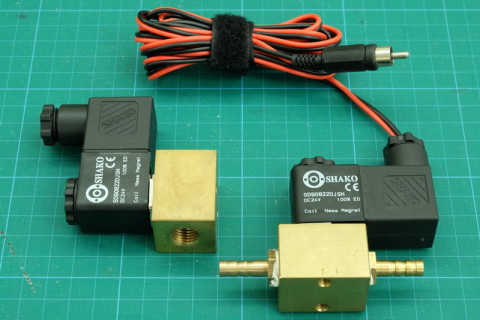
24V Shako PU220AR. I normally use 12v and these do not get much use. I may buy the 12V coils later but for now I find the Chinese copies to be very good. I now use 24v versions of the China valve shown below.
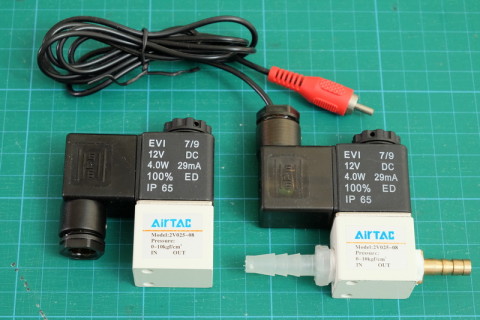
I find the AirTac 2V025-08 valves have a similar performance to the Shako valves. The AirTak valves generate a lot more crud than the brass valves though. See the photo below. The Airtacs are much cheaper than the Shako valves but require more maintainance.
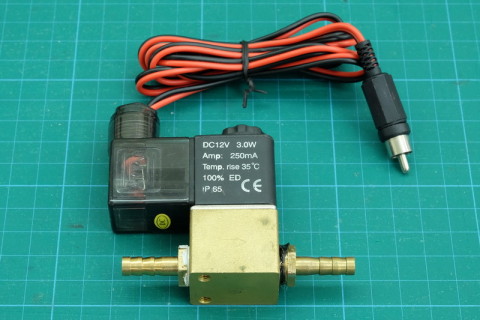
No brand, made in China valve. This was sold as a Shako clone and is currently my preferred valve. I can get fairly small drops and the drops are very reliable.
These are now available under the SLGPC brand. The price seems to be the same.
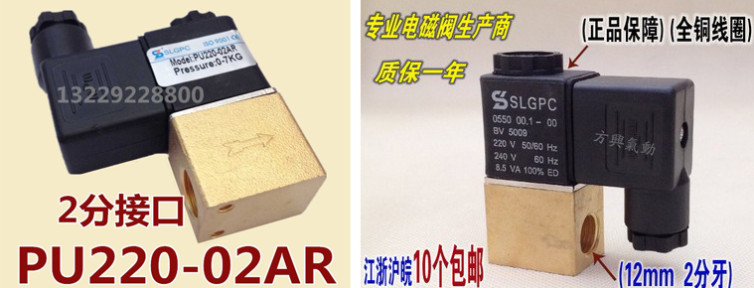
Update: I now use 24v SLGPC valves and have also swapped the coils on the no-name valves above to 24V. I find the SLGPC valves better for smaller drops.
I tried a few all-in-one valves and found these too slow. Only tried low voltages ones though. The ones here are 12v and 6v.
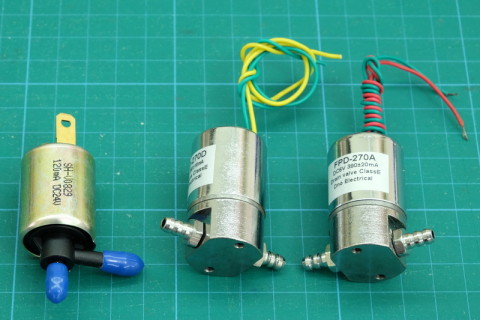
Connecting
To separate the plastic part from the metal part, undo the large screw and pull away. Inside the plastic part you will find two connectors, one is positive and the other is negative.
Some valves have the positive and negative terminals marked (+ and -), others do not. The ones that do not have labels tend to have LEDs and all the valves that I have, that have an LED, the positive wire goes to the resistor.
If you get the wires the wrong way a round, the valve will still work but the LED will not light.
Cleaning the valves
The below video shows how to dismantle and clean the Shako valve
and this one shows a neglected Airtac 2V025-08 (not as neglected as the one in the photo below the video though).
The Airtacs are pretty good valves but they need more maintenance than the brass valves. Here is a picture of one I hadn’t used for a while and wondered why it didn’t work.
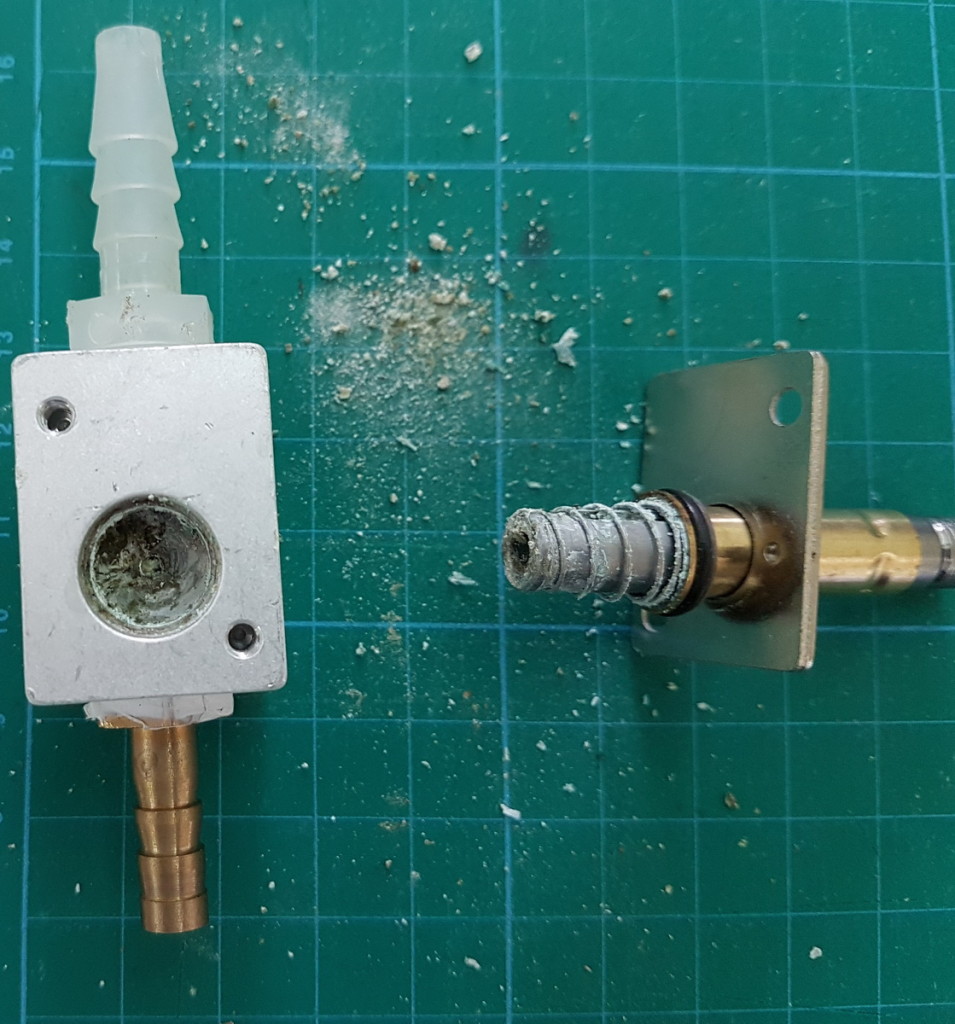
Leads
When I started I created the leads from twin core wire and phono/RCA sockets. This is great when you need extra long leads. Now, I buy cheap audio cables and cut one of the ends off.
Nozzles
I have tried brass nozzles and plastic nozzles. I find the brass ones give better results with more consistent drops. The plastic nozzles tend to be unreliable, sometimes the drops are good, sometimes they are not. I feel that plastic is too “slippy” and the water drips from the nozzle when it is not active.
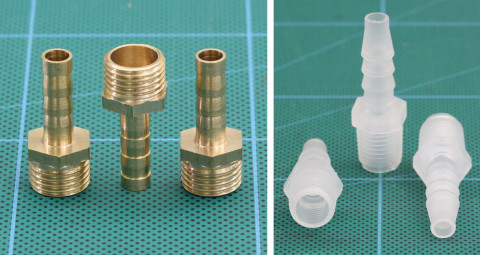
The smallest brass nozzles I have found are 6mm. These gives good results but can sometimes be too large. To make the orifice smaller I use a small piece of tube and a short length of drinking straw. Inside the straw there is another small piece of PVC tube. I am still experimenting with different tubes and pipes.
Make sure you get an air tight seal when attaching the nozzles to the valves. If air can get in water will slowly drip out. To make a seal you should use plumbers tape. This is a thin non adhesive tape (the white tape in the photo below). In a pinch you can use electrical tape (the black tape in the photo below) but this can leave an adhesive residue which is difficult to remove. I cut the electrical tape in to thin pieces before using it.
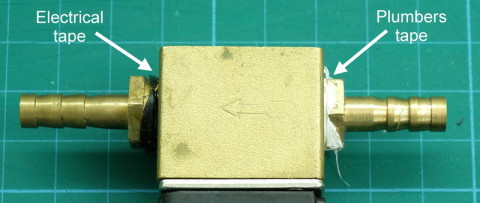
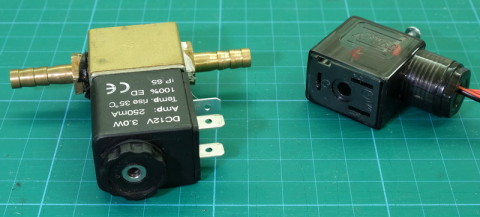
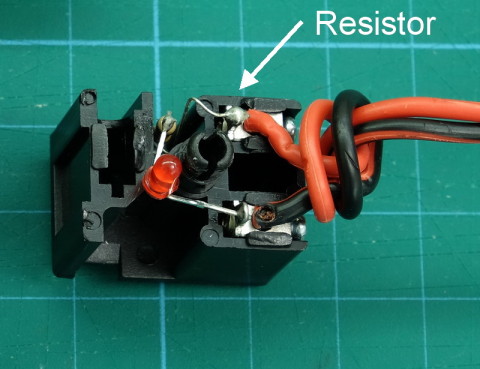
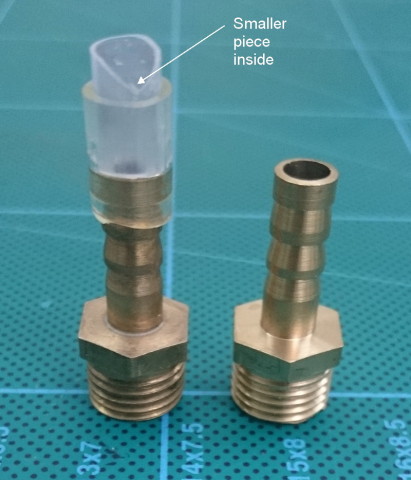
Hi Martyn and thank you for your great jobs. I have just a question: can you gently tell me exactly whic model have you used for the dropcontroller? Can you give me the model and where you have buyed the valves and the nozzles? thank you very much. kind regards. (angelo)
The first model was the basic dropController and I used this for quite a while. However, using the keypad and small LCD is not the best user experience.
Later I added the Bluetooth version and this is the one I use now. Shortly after making the Bluetooth version I was asked for a PC version but I personally seldom use it. I find the Bluetooth version the easiest and most convenient to use. The nice thing about the PC version is that any model can be used just by changing the firmware.
If you are starting to make your own and you have an Android device I would suggest the BT version.
I bought the valves and nozzles from Taobao. Taobao is like a Chinese ebay. All the valves are available from ebay though. Shako can usually be bought from local suppliers. Not sure about the other brands.
Hi Martyn and thank you so much for your answer.I take your advice to use the version bluethoot for its convenience compared to the small display and keypad.
As for the valves and nozzles I tried to look at the site Taobao but unfortunately it’s all written in Chinese, which is a language I do not know.
I agree on the purchase from local suppliers, but however you wondering if you can suggest a precise model of the valve and its nozzle to avoid mistakes in the purchase. Thanks again for your patience and good day.
Either the Shako or the AirTak valves (see above) will give you good results. The Chuka 2V025 08 is also suitable although I think this is basically the same as the AirTak.
The Shako seems to be the preferred module by most users but can be fairly expensive. Do an online search for “water drop valve”. You will gets lots of hits and see many different models.
It is also worth while trying cheaper no name valves. My preferred valve is the no name Chinese model (photo above). These were a lot cheaper than the Shako and the AirTak.
.
Hi Martyn thank you very much for your reply. have a nice day. bye.
Hi Martyn,
First of all, my heartiest congratulations on setting up a great resource for DIY drop controller for newbies like me. This is my very first electronic project, and I am trying to build the Perf Board version of your dropController BT. I am trying to connect the RCA jack wire to the AirTac valve. It’s a bit confusing for a newbie like me. You see, I cut off an audio cable with RCA jack. There are 2 cores inside. However, on the AirTac valve there are 3 pin-outs – marked 1,2 & Gnd. How do I connect? I see that your AirTac valve has a single wire coming out. I assume it is with 2 cores connected to 2 separate pins. Correct me if I am wrong. Thanks a ton in advance.
The connections marked 1 and 2 should also have + and – signs.
+vcc goes to + and circuit GND goes to -.
Have a look at the bottom of http://www.mecheltron.com/en/product/solenoid-valve-2v025-08
Hello~ Im trying to build this machine? and right now im studing arduino…. Trying to buy all the materials in aliexpress, but i am stuck here with which nozzle i should buy…. and the connection tube between the reservoir and solenoid valve…. and also the reservoir itself…..
could you be more specific about these three materials? thank you in advance
Nozzles
I generally use 6mm brass nozzles with and without small pieces of tube added to the end. I find the plastic nozzles not very reliable for the drops but they are fine to use on the in side of the solenoid valve.
Reservoir
For the reservoir I now generally use lab squirty bottles. These have a lid with a hole and inner pipe that is just right to turn into a Mariotte siphon. I drill a small hole at the base of the bottle and hot glue a piece of stiff plastic pipe in the hole or a nozzle with a bolt. I then connect soft PVC pipe between the small tube and the solenoid valve. I am not sure what size the soft PVC tube is but it fits the 6mm nozzle. Other sizes can be used. The scantips site has a photo of (I think it is 10mm pipe) and more information about nozzles. Using a larger tube increases the presure.
I have also used sports drinks bottles, the ones with the drinking nipple/stopper. The stopper fits the same PVC pipe very well.
You can also make reservoirs from large pipe with end stoppers, see the MJKZZ setup https://www.flickr.com/photos/60552763@N00/9450145125 and also search for cameraxe drop kit photos https://www.google.co.jp/search?q=camera+drop+kit&biw=1110&bih=711&tbm=isch&tbo=u&source=univ&sa=X&ved=0ahUKEwj14dLDnOfRAhXIvLwKHRQVD8AQsAQIIg
It is really up to you, try different tubes and different containers for the reservoir. Although I generally use lab squirty bottles I still experiment with other containers.
I have been meaning to redo the video and write up more about the setup but I have found it hard to get the time.